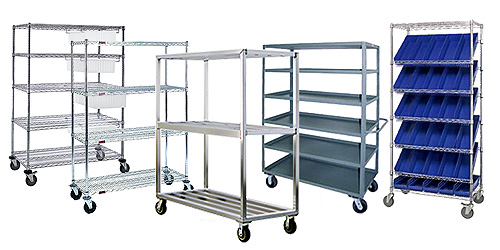

In today’s fast moving storage operations, mobility, flexibility, and convenience are critical for keeping up with the rapidly changing demands of operations like assembly and order picking. Industrial shelving has evolved from simple bolt-up static types to a variety of mobile configurations that serve specific applications. Here are some ways to improve your operation by adding mobile shelves.
Read the rest of this entry »
Tags: steel, assembly, mobile shelving, wire, shelf truck, security cage, aluminum, order pick, replenish, short term storage, mobile aisle
Posted in Storage, Organization & Workstations|
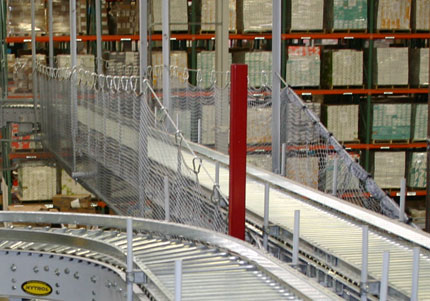
Conveyors are often installed overhead or suspended from the ceiling to help conserve floor space or to interface with mezzanines or platforms. This may create potential fall hazards. Loads can fall from inclined conveyors as they are conveyed up or down, or be subject to other factors that can cause a fall from an elevated line. Even on a floor-mounted conveyor, a spill can split a case, land on an order pickers’ toes, or damage inventory.
Read the rest of this entry »
Tags: Belt Conveyors, guard rails, conveyor safety, fall protection
Posted in Conveyor Optimization|
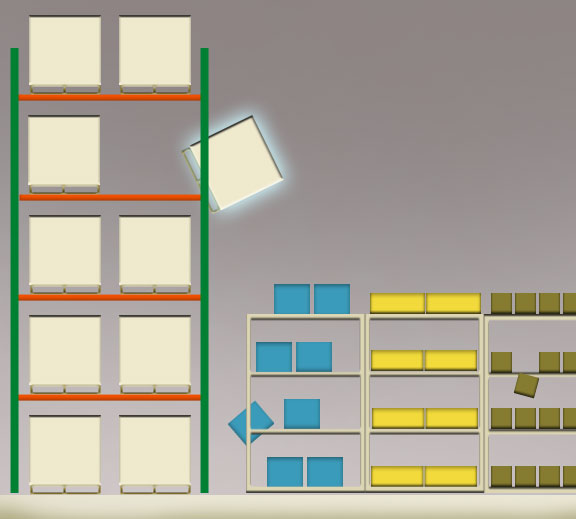
What goes up…
In warehousing and storage operations where inventory is stored high on racks, stacked on floors, slotted into on multi-level shelving, mezzanine deck-overs or on suspended/overhead conveyor as it moves, there is one constant: things will fall. They fall because they’re stacked wrong. They fall because an order picker or a forklift bumps them. Things fall due to seismic activity, machine stops, or silly mistakes. Sometimes it seems like they fall for no reason at all.
What can you do to “stop the drop”?
Read the rest of this entry »
Tags: product damage, conveyor safety, warehouse control, Inventory protection
Posted in Safety & Ergonomics|
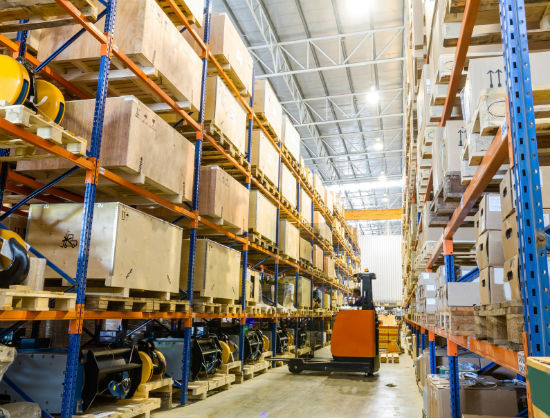
Is your facility in a seismic zone? Are you sure?
An increasing number of areas across the United States are demonstrating geological stresses and increased fault pressures that lead to earthquakes and smaller seismic events. So much more that our national seismic map was recently updated to include areas of the northeast and southern tier states not previously known for earthquakes, as well as enhanced zone classification in the inter-mountain west and known fault areas. Are you sure your pallet rack is correctly configured to withstand seismic ground forces?
Read the rest of this entry »
Tags: safety net, wire mesh panel, pallet support, stretch wrap, Pallet Rack, training, wire decking, seismic, earthquake, fall protection
Posted in Pallet & Warehouse Racks|
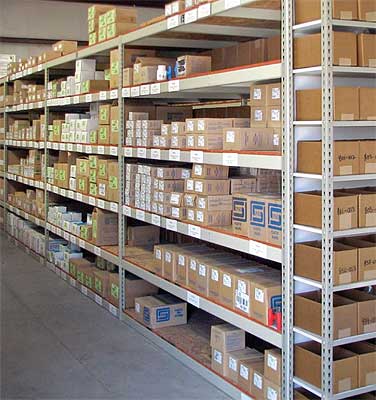
It’s common to store large amounts of inventory on
industrial shelving. The diversity of that inventory—bins full of parts, boxes of varying weights and other odd loads—can contribute to the dangers of falling product. Shelves are accessed frequently and by a variety of people, meaning that every time they are loaded, unloaded, picked or bumped, a spill could happen. A falling shelf load could cause worker injuries and of course ruin your inventory. What can you do about it?
Read the rest of this entry »
Tags: warehousing, shelving, plant safety, Inventory protection
Posted in Storage, Organization & Workstations|

When it comes to warehousing operations, there are many ways to approach a continuous improvement project. You can automate, you can reorganize. You can employ a consultant. Three of the constant factors are time, standards, and data.
Here are some insights on each of these important areas:
Read the rest of this entry »
Tags: lean warehousing, ROI, wcs, benchmarking, data, facility optimization, WMS
Posted in Automation, Labor & Efficiency|
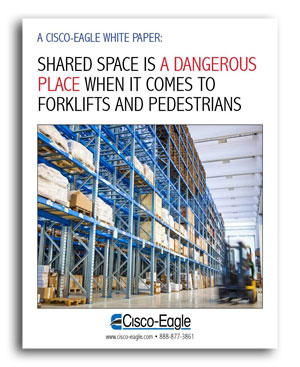
36% of forklift injury accidents involve pedestrians. That’s tens of thousands of accidents a year in the U.S. alone, a great many of them with direct bearing on pedestrians, who are at great risk. Due to the sheer mass of forklifts, they are particularly dangerous for pedestrians. Almost all these accidents result in serious injuries due to the mass and size of forklifts. Forklifts account for 1% of industrial accidents, but 10% of injuries. That statistic alone should put dealing with lift traffic and the ways it threatens walking employees, order pickers, and others a top priority.
Read the rest of this entry »
Tags: industrial safety, warehouse safety, AisleCop
Posted in Forklift - Pedestrian Safety|

Industrial workplace safety bears repetition and consistent reinforcement
For manufacturing and distribution operations, workplace safety doesn’t just protect workers—it optimizes productivity and helps drive revenue growth. It also helps protect company assets, reduces downtime, and increases morale. What can you do to protect your employees in picking, packing, material handling, assembly, maintenance and similar work? To answer this question, we spoke with leading manufacturers and distributors. Here’s what they had to say: Read the rest of this entry »
Tags: Hytrol, industrial safety, Unex, ergonomics, WireCrafters
Posted in Safety & Ergonomics|
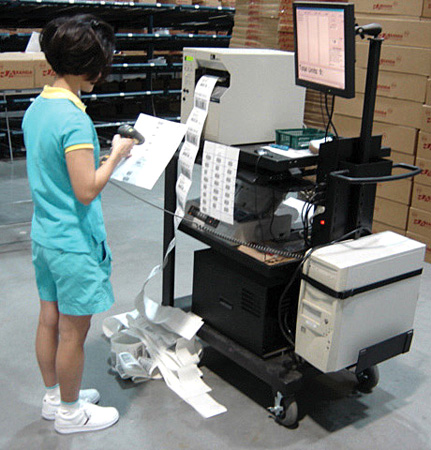
Reducing steps and wasted time
How many steps do your floor managers take going back and forth to the computer and print stations in the plant as they do their jobs? How much time does all that walking take over a year’s time? How much more work could be done if computers and printers could go where they do? If you’re managing materials going to and from storage, all that travel time is taking valuable people assets away from what should be their primary function. Read the rest of this entry »
Tags: ROI
Posted in Warehousing & Distribution|
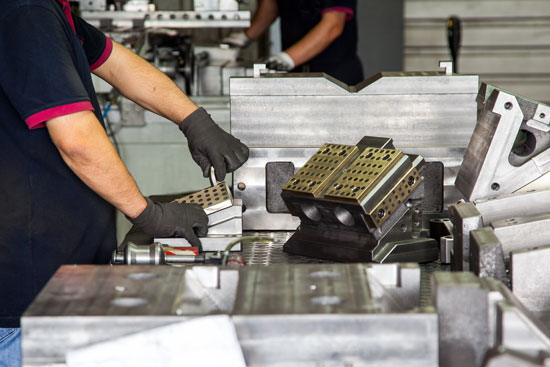
Waste might be the most critical measure for manufacturing operations – waste of labor, materials, time and money. Many companies are faced with nearly constant pressure to cut costs and increase efficiency, even as demand spikes. This means reducing costs without compromising quality or throughput. What are some things you can do to balance these needs?
Read the rest of this entry »
Tags: assembly, cost-of-goods, lean manufacturing, ROI, Cost Reduction
Posted in Manufacturing|
Read our customer reviews
